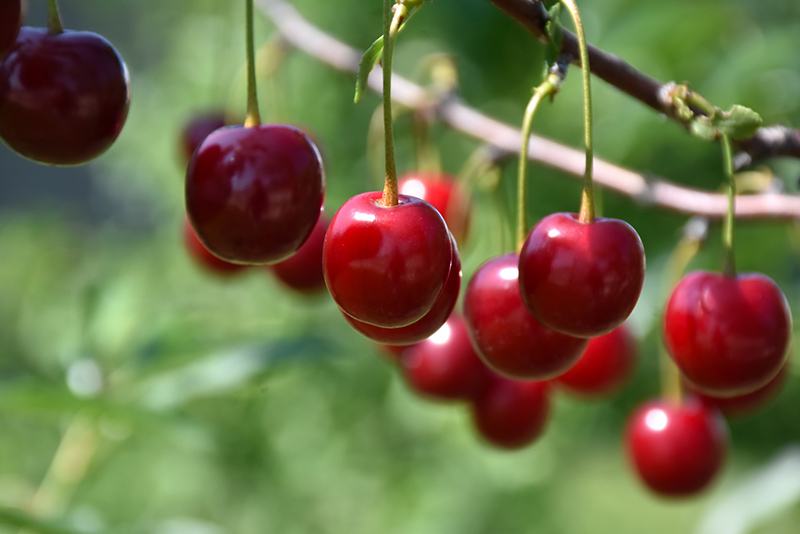Find Plants
Romeo Cherry (tree form)
Prunus 'Romeo (tree form)'
Height: 12 feet
Spread: 7 feet
Sunlight:
![]()
Hardiness Zone: 2
Description:
A wonderful new introduction with fruit that is excellent for juicing and has good eating and processing qualities; a vigorous and hardy small tree that is lovely as a garden accent or focal point as well
Edible Qualities
Romeo Cherry (tree form) is a small tree that is commonly grown for its edible qualities. It produces crimson round fruit (technically 'drupes') with red flesh which are usually ready for picking in mid summer. Note that the fruits have hard inedible pits inside which must be removed before eating or processing. The fruits have a sweet taste and a fleshy texture.
The fruit are most often used in the following ways:
- Fresh Eating
- Baking
- Preserves
- Wine-Making
- Canning
Features & Attributes
Romeo Cherry (tree form) features showy clusters of fragrant white flowers along the branches in mid spring. It has green deciduous foliage. The glossy oval leaves turn yellow in fall. The fruits are showy crimson drupes carried in abundance in mid summer.
This is a deciduous tree with a strong central leader and an upright spreading habit of growth. Its average texture blends into the landscape, but can be balanced by one or two finer or coarser trees or shrubs for an effective composition. This is a high maintenance plant that will require regular care and upkeep, and is best pruned in late winter once the threat of extreme cold has passed. It is a good choice for attracting birds to your yard. It has no significant negative characteristics.
Aside from its primary use as an edible, Romeo Cherry (tree form) is sutiable for the following landscape applications;
- Accent
- General Garden Use
- Orchard/Edible Landscaping
Planting & Growing
Romeo Cherry (tree form) will grow to be about 12 feet tall at maturity, with a spread of 7 feet. It has a low canopy with a typical clearance of 3 feet from the ground, and is suitable for planting under power lines. It grows at a medium rate, and under ideal conditions can be expected to live for 40 years or more. This is a self-pollinating variety, so it doesn't require a second plant nearby to set fruit.
This tree is typically grown in a designated area of the yard because of its mature size and spread. It should only be grown in full sunlight. It does best in average to evenly moist conditions, but will not tolerate standing water. It is not particular as to soil type or pH. It is highly tolerant of urban pollution and will even thrive in inner city environments. This particular variety is an interspecific hybrid.
Disclaimer - This Plant Finder tool is an online resource representing many of the varieties that we carry over the course of the season, and is intended for informational purposes only. Inventory varies seasonally, so we cannot guarantee that every plant will be in stock at all times - please contact the store directly for availability. It does not include our entire inventory of plants, so be sure to visit our store to see varieties that may not be represented on this list.

